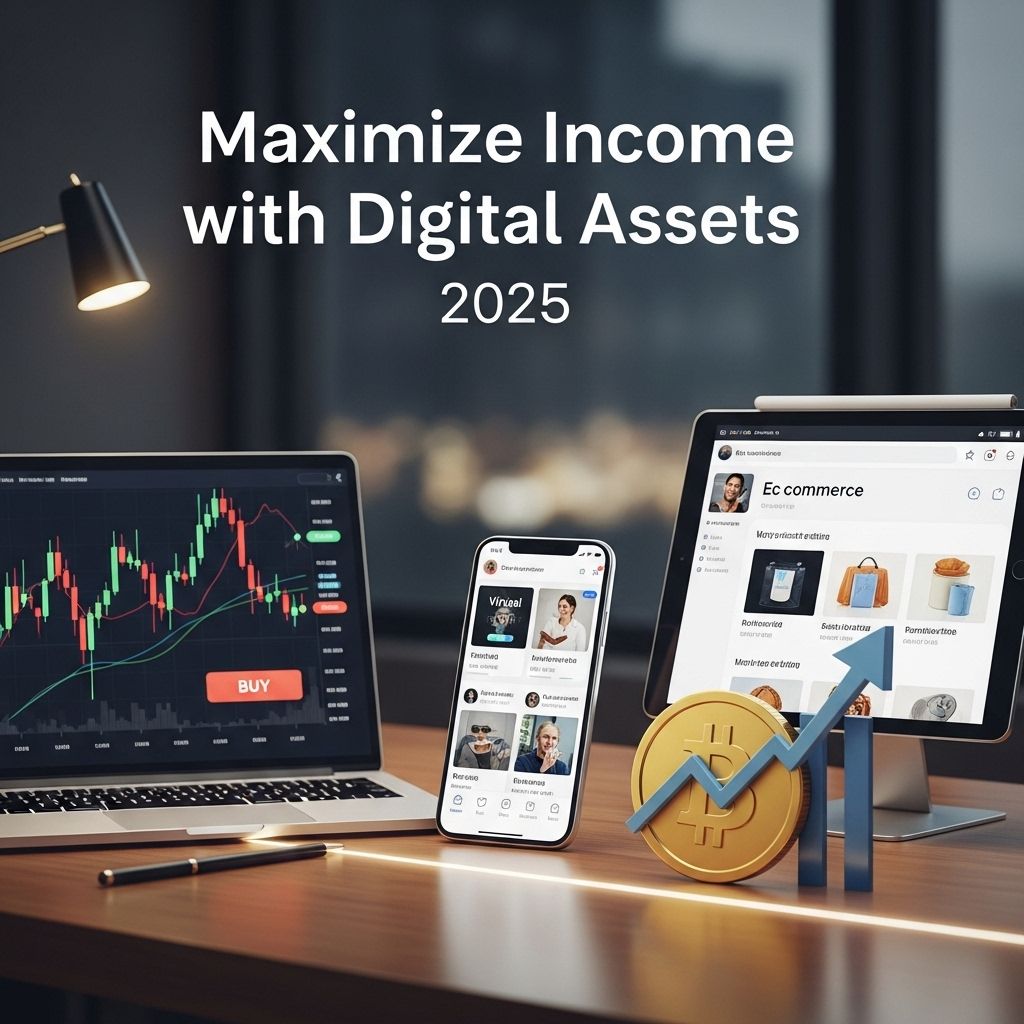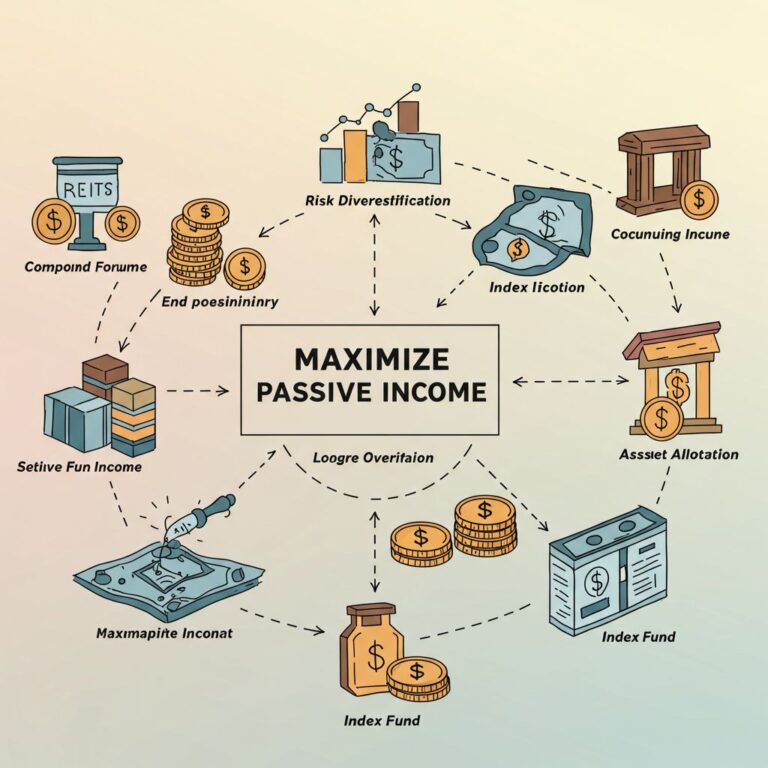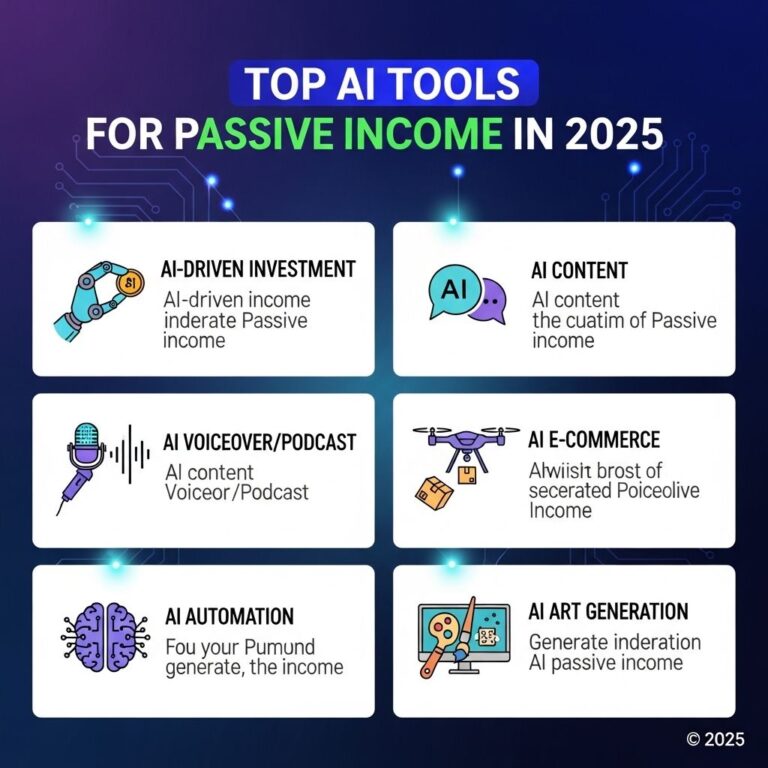In the rapidly evolving landscape of finance and technology, digital assets have emerged as a transformative force, enabling individuals and businesses alike to maximize income streams. As we move into 2025, understanding how to effectively leverage digital assets can be the key to financial success. From cryptocurrencies to NFTs, the opportunities are vast and varied. In this article, we will explore strategies, tools, and best practices for maximizing income with digital assets.
Table of Contents
Understanding Digital Assets
Digital assets refer to any asset that exists in a digital form and can be owned, traded, or sold. Some common types of digital assets include:
- Cryptocurrencies (e.g., Bitcoin, Ethereum)
- Non-Fungible Tokens (NFTs)
- Digital Art and Collectibles
- Domain Names
- Digital Real Estate
- Decentralized Finance (DeFi) Tokens
Why Invest in Digital Assets?
The appeal of digital assets lies in their potential for high returns, diversification, and accessibility. Here are some compelling reasons to consider investing in digital assets:
- High Return Potential: Many digital assets have seen exponential growth in value.
- Diversification: Digital assets can provide a hedge against traditional market downturns.
- Accessibility: With just an internet connection, anyone can invest in digital assets.
- 24/7 Trading: Unlike traditional markets, digital assets can be traded at any time.
Strategies for Maximizing Income
1. Investing in Cryptocurrencies
Cryptocurrencies remain one of the most popular digital assets for investment. To maximize your returns, consider the following strategies:
| Strategy | Description |
|---|---|
| HODLing | Buying and holding cryptocurrencies for the long term, regardless of market fluctuations. |
| Trading | Buying and selling cryptocurrencies based on market trends and analysis. |
| Staking | Participating in network operations to earn rewards while holding cryptocurrencies. |
2. Exploring Non-Fungible Tokens (NFTs)
NFTs have gained massive popularity, especially in the art and entertainment sectors. To capitalize on this trend:
- Invest in unique digital artworks that demonstrate strong cultural relevance.
- Create and mint your own NFTs, leveraging social media for promotion.
- Engage with NFT communities to stay updated on emerging trends.
3. Engaging in Decentralized Finance (DeFi)
Decentralized finance refers to financial services using smart contracts on blockchains. Here’s how you can maximize your income through DeFi:
- Lending and Borrowing: Utilize platforms that allow you to lend or borrow assets, earning interest over time.
- Yield Farming: Provide liquidity to DeFi platforms and earn rewards.
- Liquidity Mining: Participate in liquidity pools and earn tokens as a reward.
Building a Diversified Digital Asset Portfolio
To mitigate risks and maximize gains, a diversified portfolio is essential. Consider the following asset allocation:
- 40% in established cryptocurrencies (e.g., BTC, ETH)
- 30% in promising altcoins
- 20% in NFTs and digital art
- 10% in DeFi projects
Tools and Platforms for Managing Digital Assets
Efficient management of your digital assets is crucial for success. Here are some top tools and platforms to consider:
1. Cryptocurrency Exchanges
Exchanges play a pivotal role in buying, selling, and trading cryptocurrencies. Some popular exchanges include:
- Coinbase
- Binance
- Kraken
- Gemini
2. Wallets
Secure storage is vital for your digital assets. Choose between:
- Hot Wallets: Online wallets for easy access (e.g., MetaMask)
- Cold Wallets: Offline storage for enhanced security (e.g., Ledger, Trezor)
3. Portfolio Management Tools
Track and analyze your investments with tools like:
- Blockfolio
- CoinMarketCap
- Crypto Pro
Risks and Considerations
While digital assets present lucrative opportunities, they also come with risks. Keep the following in mind:
- Volatility: Prices can fluctuate drastically.
- Regulatory Changes: Keep abreast of legal developments.
- Security Risks: Protect your assets from hacks and scams.
- Lack of Understanding: Always conduct thorough research before investing.
Future Trends in Digital Assets
As we look towards 2025, several trends are expected to shape the digital assets landscape:
- Increased Institutional Adoption: More institutions are recognizing the value of digital assets.
- Integration with Traditional Finance: Traditional banks and financial services will increasingly incorporate digital assets.
- Emergence of New Technologies: Innovations in blockchain and DeFi will provide new opportunities.
Conclusion
Maximizing income with digital assets requires a sound understanding of the market, strategic planning, and continuous adaptation to evolving trends. By diversifying your portfolio, employing effective investment strategies, and leveraging the right tools, you can navigate the complexities of digital assets and set yourself up for financial success in 2025 and beyond. As you embark on this journey, remember to stay informed and be cautious of the inherent risks involved.
FAQ
What are digital assets and how can they maximize income?
Digital assets include cryptocurrencies, NFTs, digital real estate, and online businesses. They can maximize income through appreciation in value, generating passive income, and leveraging technology for scalable revenue.
What strategies can I use to invest in digital assets in 2025?
In 2025, consider diversifying your portfolio with cryptocurrencies, investing in NFTs, participating in yield farming, and exploring decentralized finance (DeFi) platforms for additional income.
How do I evaluate the potential of digital assets?
Evaluate digital assets by analyzing market trends, understanding the technology behind them, assessing the team and community support, and looking into their use cases and demand in the market.
What are the risks associated with investing in digital assets?
Risks include market volatility, regulatory changes, potential loss of investment, and security vulnerabilities. It’s essential to conduct thorough research and consider your risk tolerance.
Can digital assets provide passive income?
Yes, digital assets can provide passive income through mechanisms like staking, lending, and earning interest on holdings in DeFi platforms.
What are the tax implications of earning income from digital assets?
Earnings from digital assets are subject to capital gains tax and income tax, depending on your jurisdiction. It’s important to keep records and consult a tax professional for compliance.









